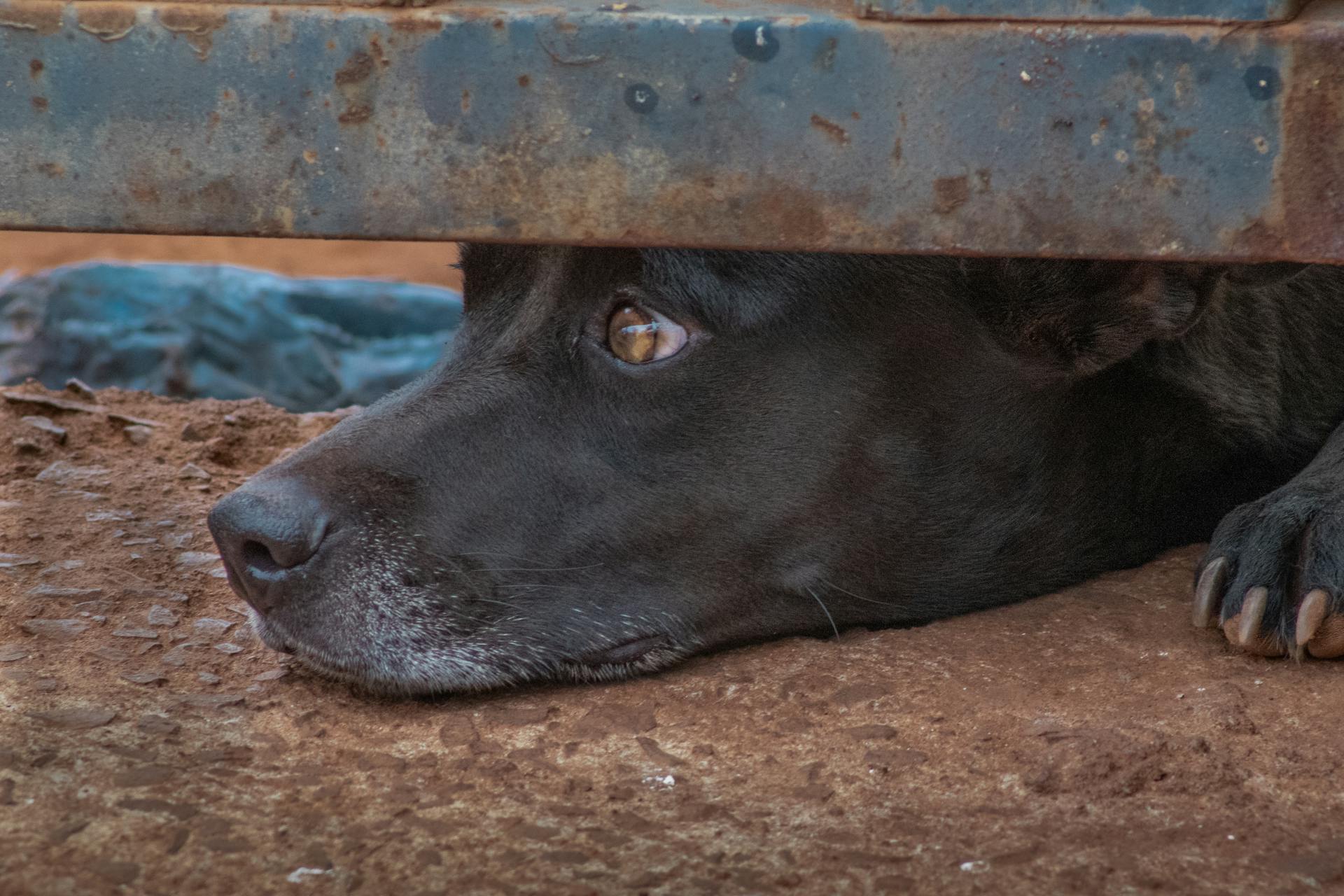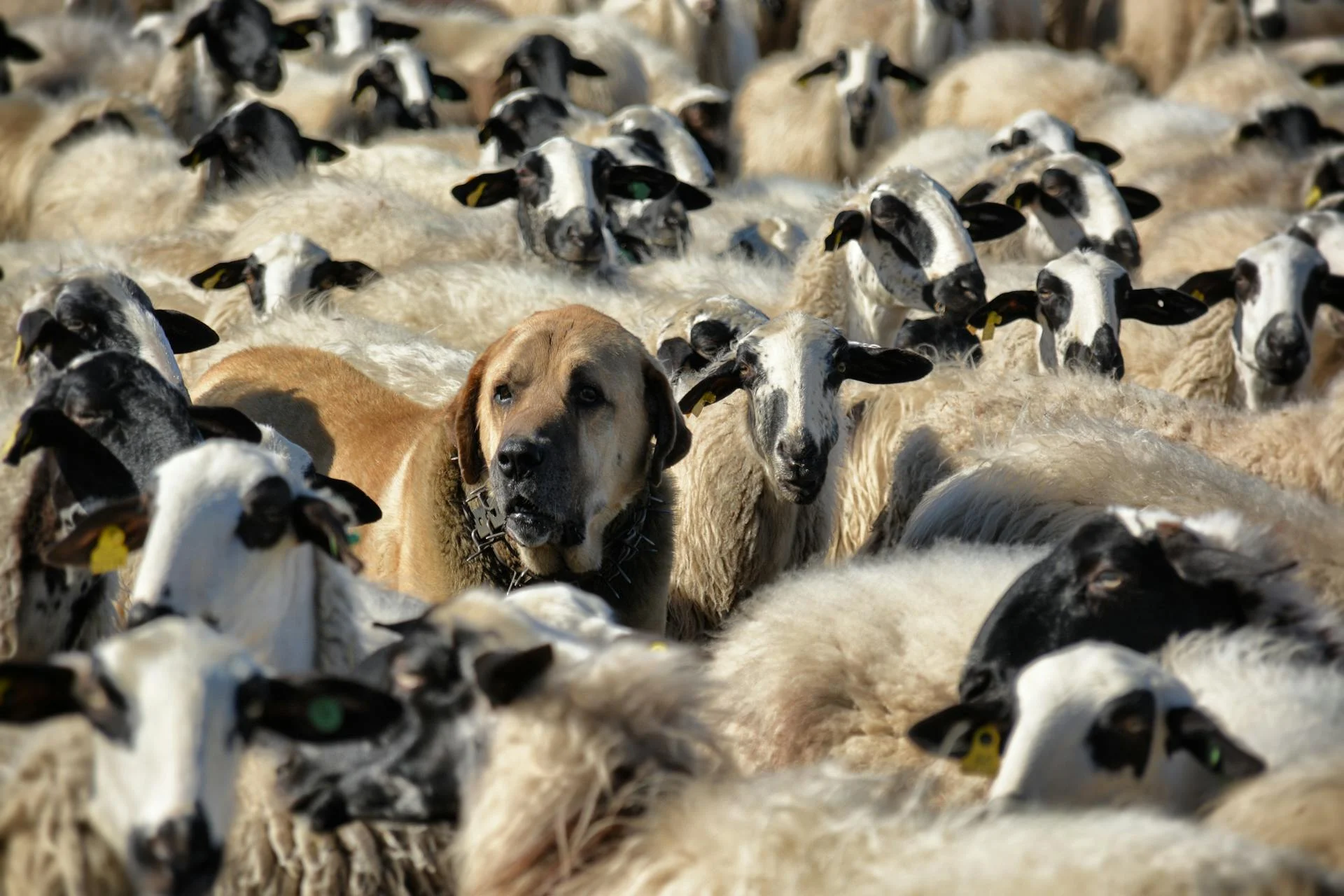
The teenage years - a time of great change and growth for both humans and dogs. During this stage, your dog will undergo significant physical, emotional, and behavioral transformations that can be both exciting and challenging.
Between 12 to 18 months, your dog's brain is still developing, and their impulses may get the better of them, leading to mischievous behavior. This is a normal part of their growth, but it's essential to establish clear boundaries and rules to help them learn what's acceptable.
As your dog enters adolescence, they'll start to assert their independence, testing limits and pushing boundaries. This can manifest as disobedience, destructive behavior, or even fear-based aggression. With patience, consistency, and positive reinforcement, you can help your dog navigate this critical phase.
With the right approach, you can guide your dog through the teenage years and set them up for a lifetime of good behavior and a strong bond with you.
Take a look at this: How Do Dog Years Work
What to Expect
The adolescent period starts at around six months for small dogs and eight months for big dogs, lasting until 18 months to two years. This is a crucial time for your puppy's development.
Puppies become more independent and interested in the outside world during adolescence. They may lose their understanding of previous training, making it harder to reinforce good behavior.
Everything is more exciting and stimulating for teenage dogs, making it challenging for them to pay attention to you. They can easily get distracted by their surroundings.
As a dog owner, you may find yourself no longer at the center of your puppy's universe, but rather an afterthought. This can be a tough adjustment, especially if you're used to being the star of the show.
You might like: Kirkland Dog Food Making Dogs Sick
Understanding Dog Behavior
Canine adolescence is a critical period of development that can have long-lasting effects on a dog's behavior and personality. This stage typically occurs between 6 to 18 months of age.
During this period, dogs undergo significant physical and hormonal changes, causing mood swings and erratic actions. Hormonal shifts can affect a teenage dog's behavior, making them exhibit behaviors like rebellion and testing boundaries.
Common behavioral problems in adolescent dogs include chewing, digging, excessive barking, jumping, mouthing or nipping, fear, anxiety, and aggression towards other dogs or people. These issues can be caused by a variety of factors, including changes in hormones, lack of exercise or mental stimulation, improper training, poor socialization, fear, anxiety, and past experiences.
Providing plenty of exercise and mental stimulation is essential to prevent and manage behavioral issues. Positive reinforcement training, socialization, and consistent rules and boundaries can also help.
Low quality food won't provide all the nutrients, vitamins, and minerals a growing body and developing mind needs. Cheap biscuits or generic dog treats can lead to overstimulation and a sugar high, making training more challenging.
Addressing underlying medical issues is crucial, and seeking professional help is necessary if the behavior is severe or concerning. In some cases, medication or behavior modification techniques may be necessary to manage the behavior.
For another approach, see: Hormonal Female Dog Behaviour
Challenges and Issues
Adolescent dogs can experience fear or anxiety, and may exhibit destructive behaviors, such as chewing or digging.
Common behavioral problems in adolescent dogs include chewing, digging, excessive barking, jumping, mouthing or nipping, fear, anxiety, and aggression towards other dogs or people.
These behaviors can be caused by changes in hormones, lack of exercise or mental stimulation, improper training, poor socialization, fear, anxiety, and past experiences.
Low quality dog food and unhealthy treats can exacerbate behavioral issues, so it's essential to provide the best quality food and healthy treats you can afford.
Jumping up on people, leash pulling, and excessive barking are common challenges during this phase, but consistent training and redirection techniques can help manage them.
Understanding that these behaviors are often a result of a lack of proper training, socialization, and exercise, as well as changes in hormones and brain development, can help owners approach the situation with patience and empathy.
See what others are reading: All about Dogs Dog Training
Common Misconceptions About

Challenging behaviors in adolescent dogs are often misunderstood. They're not just being "bad" - they're a result of a lack of proper training, socialization, and exercise, as well as changes in hormones and brain development.
Adolescent dogs won't automatically "grow out" of their behaviors if left unmanaged. Without proper guidance, these behaviors can become ingrained and persist into adulthood.
Genetics play a significant role in a dog's personality and behavior. A dog's environment, nutrition, and exercise also affect their physical and mental development.
Socialization during adolescence is crucial to ensure dogs are comfortable and confident around people, animals, and new situations.
The Challenges
Adolescence can be a challenging time for both dogs and their owners, with increased energy, challenging behaviors, and sudden mood swings.
Dogs may exhibit fear or anxiety, leading to destructive behaviors like chewing or digging. Behavioral issues during this phase can include chewing, digging, excessive barking, jumping, mouthing or nipping, fear, anxiety, and aggression towards other dogs or people.

Changes in hormones, lack of exercise or mental stimulation, improper training, poor socialization, fear, anxiety, and past experiences can contribute to behavioral issues.
Adequate exercise and mental stimulation, positive reinforcement training, socialization, and consistent rules and boundaries can help prevent and manage most behavioral issues.
Low-quality food can lead to a dog's high energy levels and expectation of junk food, making training more difficult.
Managing Behavior
Managing behavior in your teenage dog requires patience, consistency, and positive reinforcement. It's essential to understand that their behaviors are a result of hormonal changes and a search for independence, which typically starts around six months to two years old.
Providing adequate exercise and mental stimulation can help prevent and manage most behavioral issues. Positive reinforcement training, socialization, and consistent rules and boundaries are also crucial.
Their food and treats can impact their behavior, so it's essential to feed the best quality dog food you can afford and use healthy, natural treats for training. Low-quality food won't provide the necessary nutrients, vitamins, and minerals for a growing body and developing mind.
Excessive barking, jumping, and mouthing or nipping are common behavioral problems in adolescent dogs, and addressing these issues requires consistent training and redirection techniques. Identifying triggers and using positive reinforcement for quiet behavior can help manage excessive barking.
Establishing rules and boundaries is crucial during training, and breaking sessions into manageable chunks can keep your young dog engaged. Be patient and consistent in your approach to guide them through this adolescent phase effectively.
Consistent training, setting clear boundaries, and rewarding good behavior can gradually decrease unwanted behaviors like excessive barking and jumping. Remember, patience and consistency are key in managing these issues.
Training and Socialization
Training and socialization are critical for adolescent dogs as they help them develop into well-behaved and confident adults. Training teaches dogs appropriate behaviors and reinforces positive interactions with their owners and the environment.
Proper training and socialization can prevent behavioral problems and ensure a strong bond between the owner and dog. It's essential to use positive reinforcement techniques, such as rewarding desirable behaviors with treats, praise, or play.
Consistency, patience, and repetition are also crucial in training adolescent dogs. Avoid punishment or harsh training methods, as they can lead to fear and confusion in your young dog.
Socialization should start as early as possible and continue throughout adolescence. Expose your dog to a variety of people, animals, and environments, starting with calm and positive experiences and gradually introducing more challenging ones.
Monitor your dog's reactions and avoid overwhelming or stressful situations. Puppy classes or socialization groups can be helpful in providing controlled and supervised socialization opportunities.
Establishing rules and boundaries is crucial during your teenage dog's training. Use positive reinforcement techniques to encourage good behavior and break training sessions into manageable chunks to keep your young dog engaged.
Provide adequate exercise and mental stimulation, as engaging your teenage dog's mind with brain games and physical exercise is vital to prevent boredom and behavioral issues. By using positive reinforcement techniques and providing adequate exercise and mental stimulation, you can shape your dog's behavior effectively and create a strong bond based on trust and encouragement.
Common Issues
Chewing and digging are common issues in adolescent dogs, often resulting from a lack of proper training, socialization, and exercise, as well as changes in hormones and brain development.
Disobedience, excessive barking, and leash pulling are also common misbehaviors in teenage dogs, stemming from hormonal changes, testing boundaries, and seeking attention from their owners.
Fear periods can trigger behavior change in adolescent dogs, making them more prone to fear, anxiety, and aggression towards other dogs or people.
Chewing, digging, excessive barking, jumping, mouthing or nipping, fear, anxiety, and aggression towards other dogs or people are all common behavioral problems in adolescent dogs.
Proper training and consistent positive reinforcement can address these misbehaviors effectively, helping to curb issues like jumping up on people, leash pulling, and excessive barking.
Understanding that these behaviors are usually part of the development process can help frustrated owners cope better, rather than assuming their dog is simply "being bad".
Explore further: Why Does My Dog Snap at Other Dogs
Socialization and Environments
Socialization should start as early as possible and continue throughout adolescence. This is because proper socialization helps prevent behavioral problems and ensures a strong bond between the owner and dog.
It's essential to expose your teenage dog to various environments, starting with calm and positive experiences and gradually introducing more challenging ones. This helps build their confidence and social skills.
You should only let your dog interact with dogs you know or have checked with the owner first, especially when introducing them to older dogs of different sizes and breeds.
Monitor your dog's reactions and avoid overwhelming or stressful situations. If they encounter something scary, reassure them that you're there for them and use a happy, lighthearted tone of voice.
Introducing your teenage dog to new environments should be done gradually to avoid overwhelming them. Start with calm locations and gradually progress to busier areas, ensuring a safe environment and keeping a close eye on their reactions.
To help your dog adapt positively to new environments, utilize positive reinforcement techniques to build their confidence. This can be achieved by providing treats and praise in new situations.
Keep the socialization train a'runnin' by having socialization adventures at least a couple of times a week, such as taking your dog to visit a friend or going on a car ride to an interesting place.
Health and Nutrition
During your dog's teenage years, their nutritional needs are crucial for their growth and development. Adolescent dogs require a diet high in protein, vitamins, and minerals to support bone and muscle growth.
As your dog is still growing, it's essential to feed them high-quality, age-appropriate dog food. This will help ensure they get the necessary nutrients for optimal health.
You should avoid feeding your teenage dog human foods that may be harmful or nutritionally imbalanced. This will prevent any potential health issues and keep your dog on the right track.
Discover more: Dog Food for High Energy Dogs
A balanced diet tailored to meet the energy demands of your dog's active stage is vital. This means focusing on high-quality puppy food rich in essential nutrients like protein, vitamins, and minerals.
Consult with your vet to determine the right feeding schedule and portion sizes based on your dog's breed, size, and activity level. This will ensure your dog is getting the right amount of food to support their growth and development.
Bonding and Sanity
Spending quality time with your teenage dog is key to building a stronger bond.
Understanding their emotional needs is crucial, so engage in activities they enjoy, like interactive play or relaxing cuddle time. This helps foster trust and improves communication.
Consistent training and affectionate interactions will help deepen the bond between you and your four-legged companion.
Building a Stronger Bond
Spending quality time with your teenage dog is key to building a stronger bond. Understand their emotional needs and engage in activities they enjoy.

Interactive play is a great way to bond with your teenage dog, as it allows for physical exercise and mental stimulation. Consistent training using positive reinforcement is also essential for strengthening your connection.
Relaxing cuddle time is just as important as interactive play, as it helps to deepen the bond between you and your dog. Your presence and attention mean the world to your teenage dog, enhancing the trust and communication in your relationship.
Choose activities that cater to your dog's preferences, whether it's a hike in nature or a trip to the dog park. Quality time together is crucial during this adolescent phase, fostering trust and improving communication.
Surviving Puppyhood with Your Sanity Intact
Puppyhood can be a challenging time for both puppies and their owners.
Puppies need a lot of attention and care, and they can be destructive if left unattended. They chew on everything from shoes to furniture, and they can also dig up gardens and carpets.
To prevent this, it's essential to puppy-proof your home by removing any hazardous items and securing toxic substances. This includes electrical cords, cleaning supplies, and medications.
Puppies need to learn basic obedience commands, such as "sit", "stay", and "come", which can be achieved through positive reinforcement training.
Consistency is key when training a puppy, and setting a routine can help them feel secure and develop good habits.
Puppies need to be exercised regularly, but they should not be over-exercised, as this can lead to joint problems and other health issues.
A good rule of thumb is to limit puppy exercise to short periods, such as 10-15 minutes, and to avoid high-impact activities until they are fully grown.
Additional reading: What Nutrients Do Dogs Need in Homemade Dog Food
Sources
- https://fotp.com/learn/dog-training/everything-you-need-to-know-about-canine-adolescence
- https://freakonaleashdogtraining.com/teenage-tyrant-dog-tips-for-frustrated-owners/
- https://www.summitdogtraining.com/blog/surviving-puppy-adolescence
- https://www.animalhumanesociety.org/resource/when-good-play-goes-bad-dog-tolerance-changes-adolescentadult-dogs
- https://www.3lostdogs.com/just-kill-me-now-surviving-your-dogs-teen-months/
Featured Images: pexels.com


